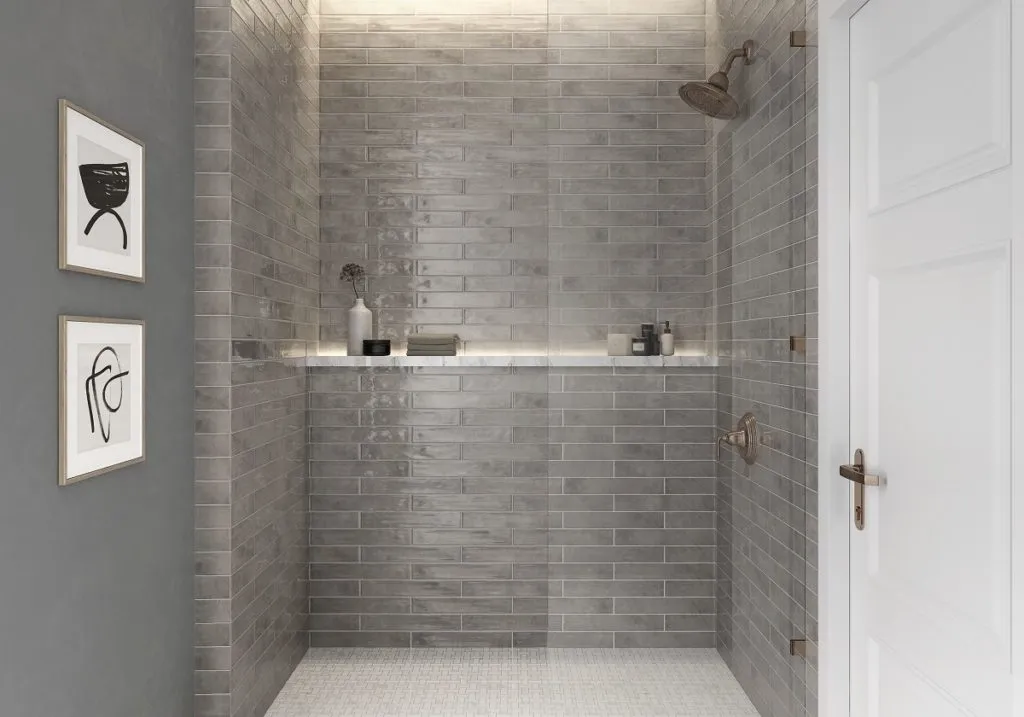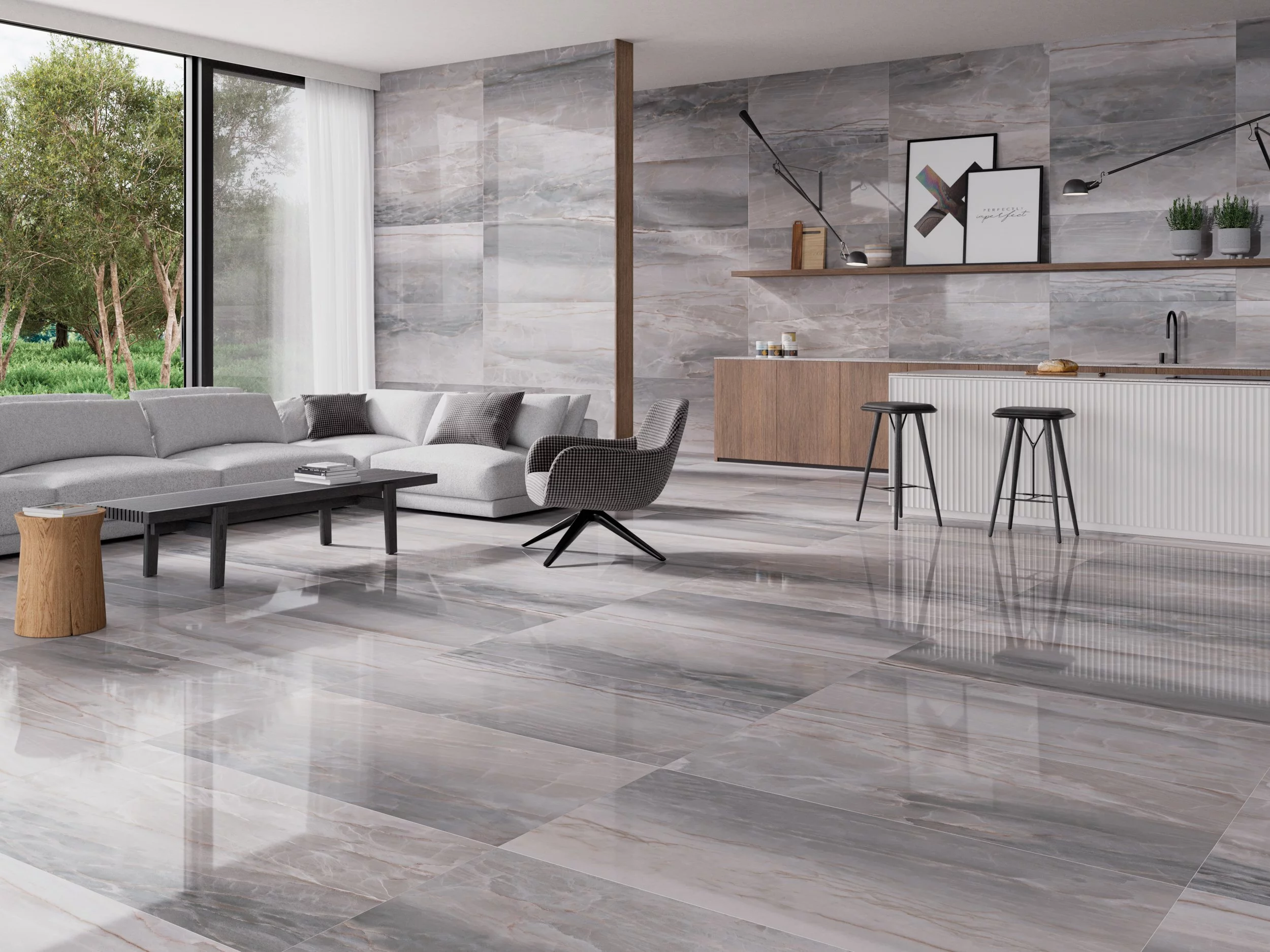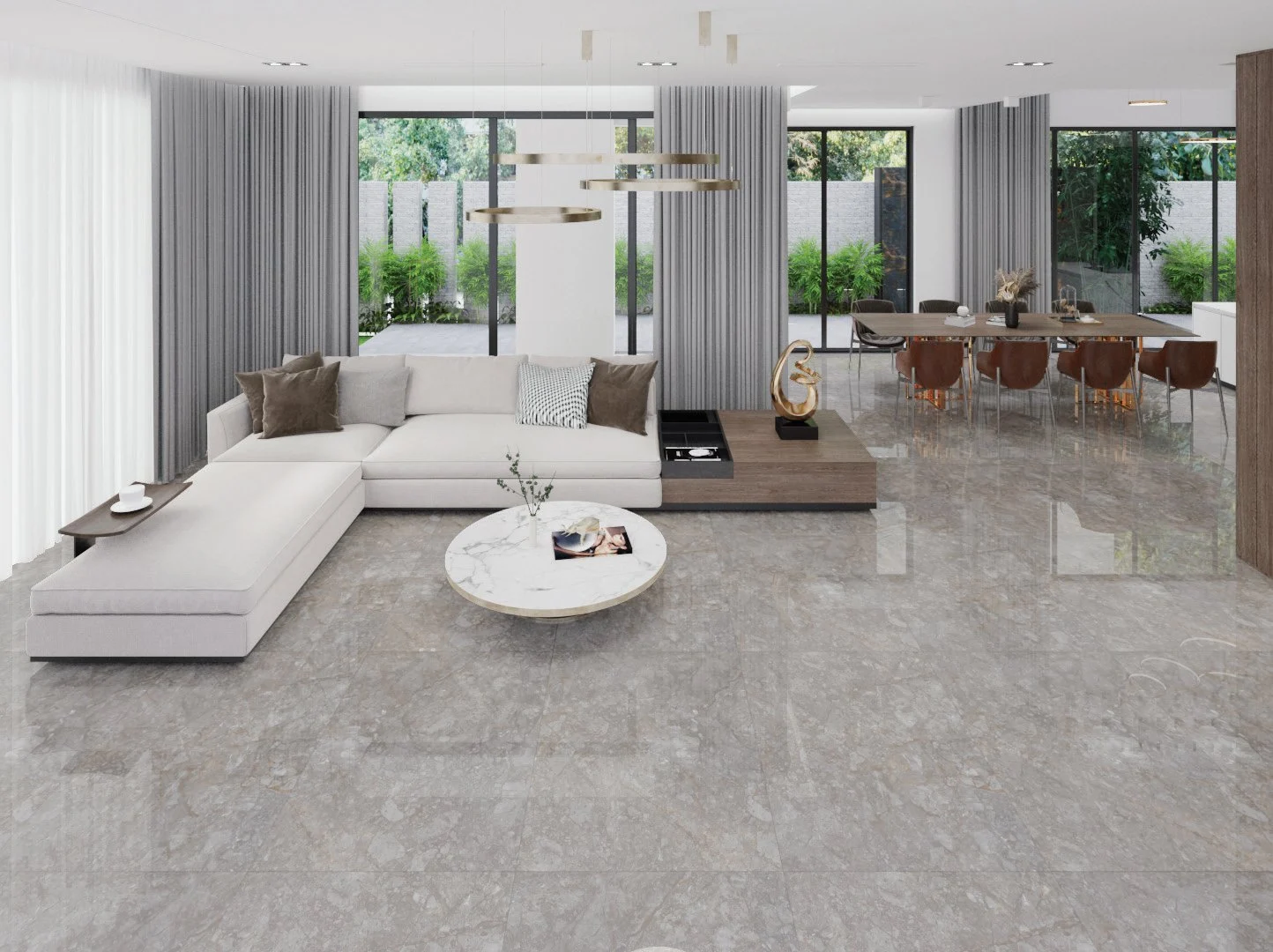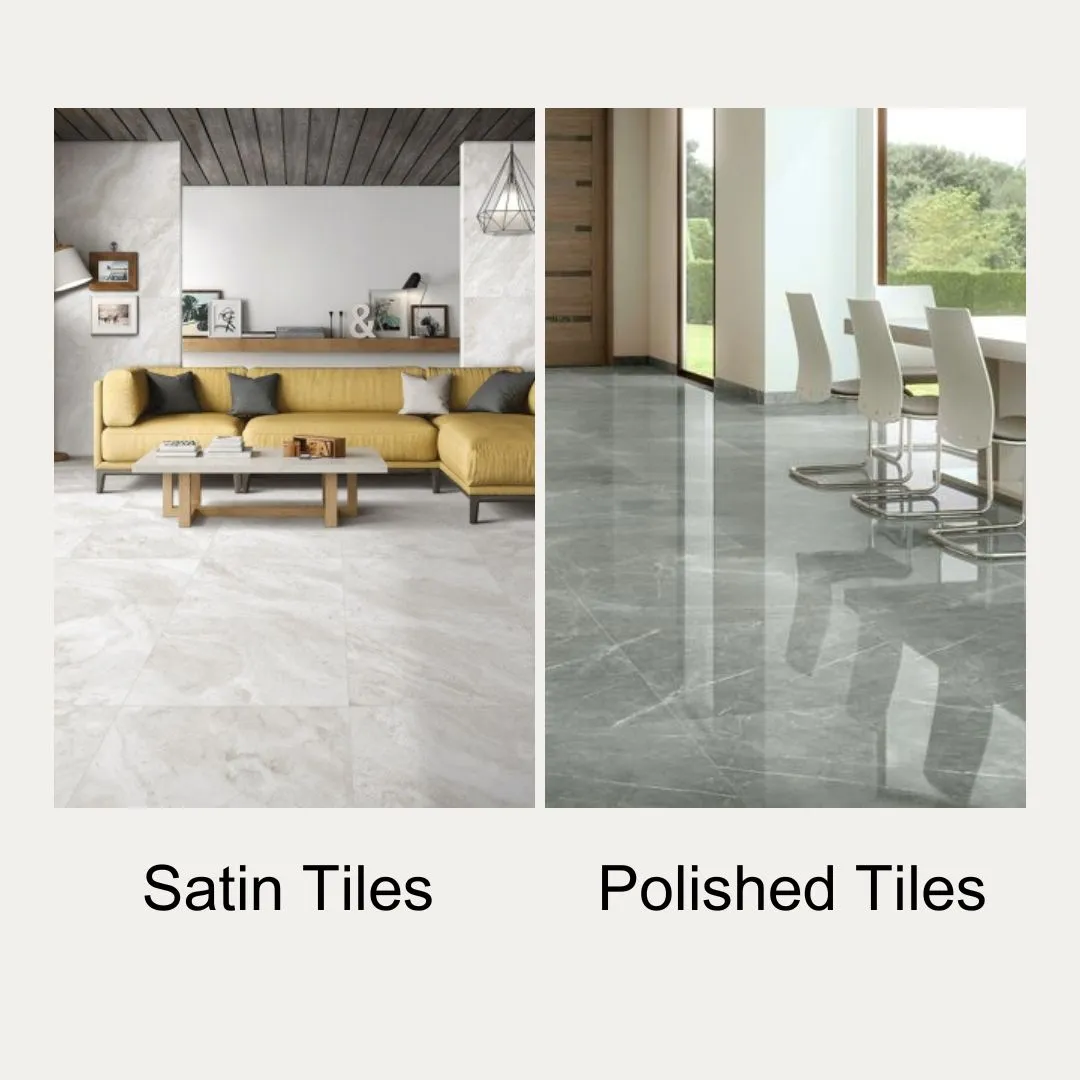4 Key Differences : Porcelain Tile vs Ceramic Tile
17-June-23
4 Key Differences : Porcelain Tile vs Ceramic Tile
Porcelain tiles and ceramic tiles are among the most popular flooring and wall covering materials used in homes and commercial spaces. While they may look similar, they have distinct differences that make them suitable for different areas and applications. In this article, we will look at the key differences between porcelain and ceramic tiles, and the benefits of each type.
Understanding Porcelain and Ceramic Tiles
When it comes to choosing the right tiles for your home or business, there are many factors to consider. One of the most important factors is the type of tile you choose. Two of the most popular types of tiles are porcelain and ceramic. Let's take a closer look at the differences between these two types of tiles.
What are Porcelain Tiles?
Porcelain tiles are made from a type of ceramic clay that is fired at very high temperatures, resulting in a dense and durable material. This makes them perfect for high-traffic areas and areas with high moisture content. In addition, porcelain tiles are non-porous and have a water absorption rate of 0.5% or less, which means they are highly resistant to water damage. This makes them ideal for areas such as bathrooms, kitchens, and outdoor areas.
Porcelain tiles are also available in a wide range of colors, patterns, and finishes. Whether you prefer a matte finish or a polished look, there is a porcelain tile that will suit your needs. They are also highly scratch-resistant and easy to clean, making them a popular choice for both residential and commercial applications.
What are Ceramic Tiles?
Ceramic tiles are made from a mixture of clay, minerals, and water, and are fired at lower temperatures than porcelain tiles. They are porous and have a water absorption rate of 3% or more, which means they are not suitable for areas with high moisture content. However, they are still a popular choice for many homeowners and businesses because of their affordability and versatility.
Ceramic tiles come in a wide range of colors and patterns, making them a great choice for those who want to add a pop of color or an interesting design to their space. They are also easy to install and maintain, making them a popular choice for DIY projects. However, it is important to note that ceramic tiles are not as durable as porcelain tiles and may not hold up as well in high-traffic areas.
When it comes down to it, the choice between porcelain and ceramic tiles will depend on your specific needs and preferences. If you are looking for a highly durable and water-resistant tile for a high-traffic area, porcelain may be the best choice for you. However, if you are on a budget or looking for a tile that will add some visual interest to your space, ceramic tiles may be the way to go.
Difference in Composition and Manufacturing Process
The main difference between porcelain and ceramic tiles lies in their composition and manufacturing process.
Composition of Porcelain Tiles
Porcelain tiles are composed of fine porcelain clay, feldspar, and other natural minerals. The clay used is more refined and purified compared to that used for ceramic tiles. The mixture is then pressed under high pressure to form a dense and consistent material that is fired at high temperatures, resulting in a hard and non-porous tile.
Composition of Ceramic Tiles
Ceramic tiles are made from a mixture of clay, minerals, and water, with some variations in the composition depending on the desired finish and color. The mixture is molded and dried, then fired at lower temperatures compared to porcelain tiles, which makes them more affordable but less durable and resistant.
Manufacturing Process for Porcelain and Ceramic Tiles
The manufacturing process for both porcelain and ceramic tiles involves molding and drying the mixture, glazing or adding a color finish, and firing at high temperatures in a kiln. However, the firing temperature for porcelain tiles is higher, making them denser and harder compared to ceramic tiles.
Durability and Resistance
The durability and resistance of porcelain and ceramic tiles are important factors to consider when choosing a flooring or wall material.
Porcelain Tile Durability
Porcelain tiles are known for their durability and long lifespan. They are resistant to scratches, stains, and wear, making them ideal for high-traffic areas such as hallways, kitchens, and commercial spaces. They are also resistant to frost and heat, making them suitable for outdoor areas.
Ceramic Tile Durability
Ceramic tiles are less durable compared to porcelain tiles due to their lower firing temperatures. They are prone to chips, cracks, and wear, making them suitable for low-traffic areas such as bedrooms and living rooms. Ceramic tiles are also not recommended for outdoor use as they are not frost-resistant.
Resistance to Water, Stains, and Scratches
Porcelain tiles are non-porous and have a low water absorption rate, making them resistant to water damage and stains. They are also resistant to scratches and wear, making them easy to clean and maintain. Ceramic tiles, on the other hand, are porous and can absorb water and stains, making them prone to damage and requiring frequent cleaning and maintenance.
Installation and Maintenance
The installation and maintenance of porcelain and ceramic tiles differ in some ways.
Installing Porcelain Tiles
Porcelain tiles are harder and denser compared to ceramic tiles, making them more difficult to cut and install. They require specialized equipment and expertise to ensure a proper installation. Porcelain tiles can also be heavier, which requires a strong and stable subfloor to support the weight.
Installing Ceramic Tiles
Ceramic tiles are easier to cut and install compared to porcelain tiles, making them a popular DIY option. They require less specialized equipment and expertise, and can be installed on a wider range of subfloors. However, ceramic tiles require more precision during installation to ensure a smooth and even surface.
Maintenance Tips for Porcelain and Ceramic Tiles
To maintain the beauty and durability of porcelain and ceramic tiles, regular cleaning and maintenance are essential. Both types require sweeping or vacuuming to remove dirt and debris, and can be mopped with a damp cloth or a mild cleaning solution. Avoid using abrasive cleaners or materials that can scratch the surface. Sealing is also recommended for ceramic tiles to protect them from stains and moisture.
Conclusion
Porcelain and ceramic tiles may look similar, but they have distinct differences in composition, durability, and resistance. Porcelain tiles are more durable and resistant, making them suitable for high-traffic areas and outdoor use. Ceramic tiles are more affordable and versatile, but require more maintenance and are not suitable for areas with high moisture content. When choosing between porcelain and ceramic tiles, it is important to consider your budget, application, and maintenance needs.











